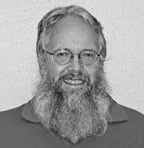Mysteries and Questions on CV History, Part 1

of the Crescenta Valley and loves local history. Reach him at
lawlerdad@yahoo.com.
I regularly get questions about our local history, sometimes the same question repeatedly. Over the next few columns, I’ll address some of these questions and attempt to solve a few mysteries about the valley. If you have any questions you’ve been puzzling over, shoot me an email at lawlerdad@yahoo.com and I’ll attempt to answer them here.
Where does the name La Crescenta come from?
Dr. Benjamin Briggs and the U.S. Postal Service are responsible for that name. Dr. Briggs is considered the founder of our fair town. From his house on Briggs Terrace at the top of Briggs Avenue, he could see the Verdugo and San Rafael mountains, and their profiles against the sky reminded him of arcs or crescents. In homage to the area’s Spanish roots, Briggs added an “a” at the end. (Crescenta is not a real Spanish word. The closest Spanish word would be “creciente” meaning “growing or increasing” – which describes our current population aptly.) When the first post office was opened at the corner of Foothill and La Crescenta, the Postal Service was concerned that there would be confusion between the town of “Crescenta” and “Crescent City,” and so, continuing with the Spanish theme, Briggs added “La” to La Crescenta.
Before Briggs named it La Crescenta, the valley had been known informally as “Big Rocks,” which, given our soil here, would have been a better name. This provides a nice segue to the next question.
“What’s the story on all the rocks in the ground here? It takes me all day to dig a fence post hole!”
Digging a hole in the Crescenta Valley can be a major undertaking. Our soil composition is usually about half dirt and half rocks, some quite large, up to boulder size. This means that when digging a hole, the first shovel thrust only goes down about four to six inches before hitting a rock. The rest of the hole-digging experience consists of prying various size rocks out, a frustrating job. Contractors call the area “Rock Crescenta”.
The rocks come from the San Gabriel Mountains to the north, gigantic granite slabs that are thrusting ever higher with each earthquake. Each quake shatters the brittle granite into smaller rocks, similar to safety glass shattering into small fragments. Those smaller rocks (and that’s a relative term, as some weigh several tons) roll down the steep mountainsides and collect in the various canyons, like Pickens, Goss and Dunsmore canyons. The rocks and debris build up in the canyons until a big enough rain comes to push all the debris out the mouth of the canyon and onto the valley floor. This happens every hundred years or so; the last major one was the New Year’s Flood of 1934. Geologists tell us the canyons are built up again with debris, just waiting for the next “gully washer” of a storm.
The land we live on is actually made up of several alluvial fans spreading out from the various canyons of the San Gabriels. The geologic term for our valley is a “bajada” (Spanish for “slope”). A bajada forms when several alluvial fans have coalesced into a single long slope away from the mountains. The alluvial fan from Pickens Canyon joins together with the fan from Goss Canyon, which joins with the fan from Shields Canyon, and thus we have a bajada.
The rocks and debris spread all the way down to the Verdugo Mountains. Over thousands of years the layers of debris have built up several hundred feet over the bedrock floor of the valley, solid rocks and ravel all the way down.
Pity the well-digger in La Crescenta!
“Why is the main street in Montrose named Honolulu?”
It’s an oddly tropical name for a semi-arid area like ours. When Americans began to settle the valley they named streets for their home states or cities, thus Pennsylvania, New York, Boston, and Lauderdale Avenues. An early developer, Lambert Thompson, had been raised by his missionary parents in Hawaii. He was able to name the new street in Montrose after his home town.
More questions answered next week.
